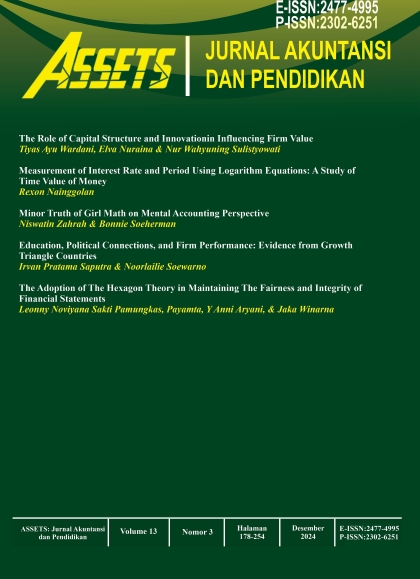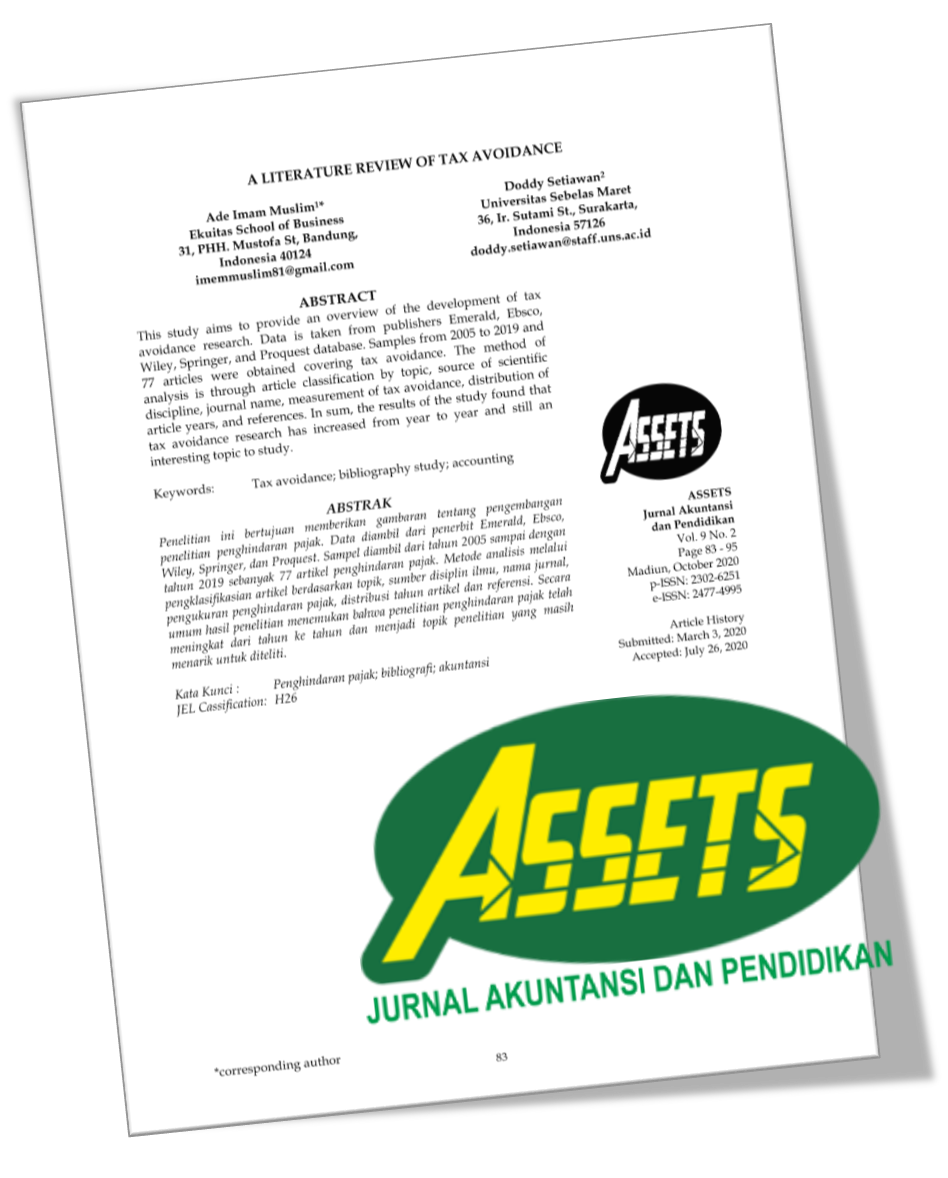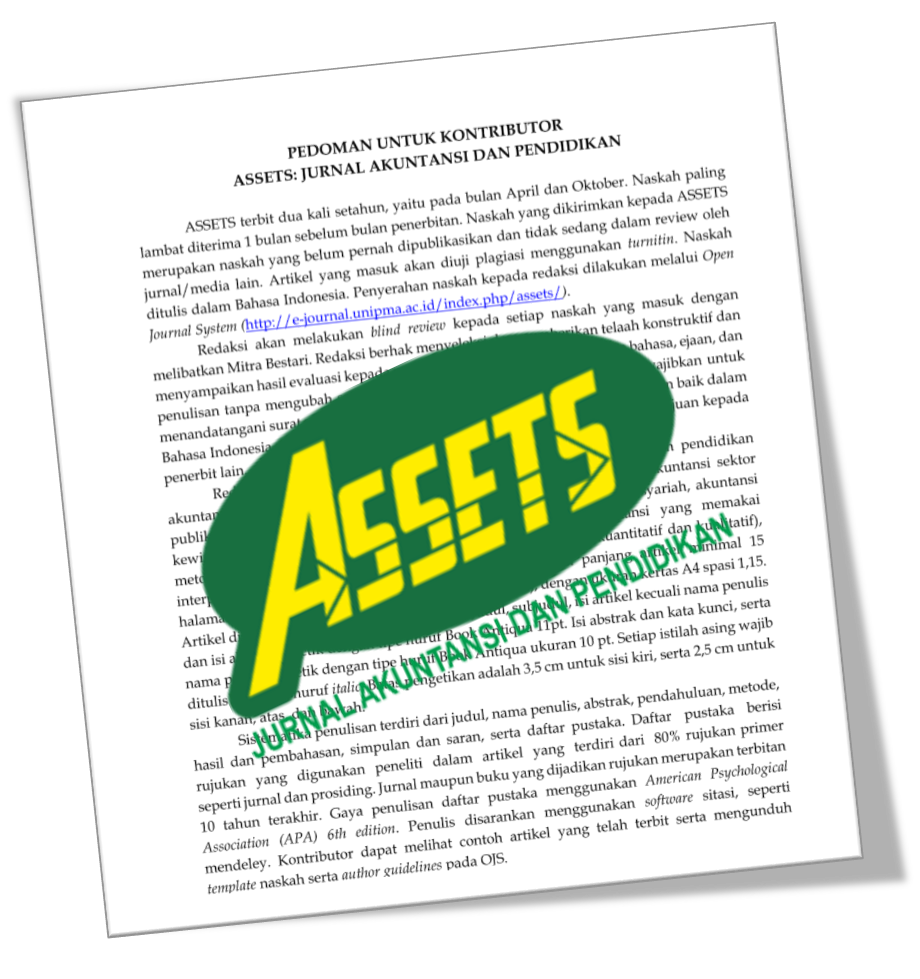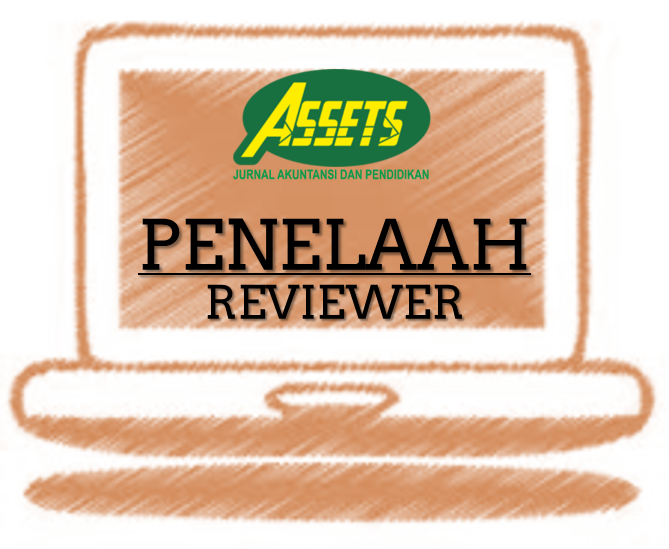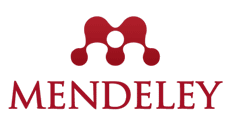THE ADOPTION OF THE HEXAGON THEORY IN MAINTAINING THE FAIRNESS AND INTEGRITY OF FINANCIAL STATEMENTS
DOI:
https://doi.org/10.25273/jap.v13i3.20490Keywords:
Proxy Fraud Hexagon, Fairness of Financial Statements, Integrity of Financial Statements, SOEs, Kewajaran Laporan Keuangan, Integritas Laporan KeuanganAbstract
ABSTRACT
This study evaluates how the fraud hexagon theory can affect the fairness and integrity of financial statements in state-owned enterprises (SOEs). This study uses the Systematic Literature Review (SLR) method by linking the main elements in the fraud hexagon theory and mapping the various proxies used in the related literature. The findings of this study indicate that applying the hexagon theory can improve the integrity of financial statements through structured fraud prevention efforts. In addition, this research can be a comprehensive approach to detecting and preventing financial statement fraud, especially in the BUMN environment, by identifying potential fraud risks through in-depth analysis of the elements of the fraud hexagon. These findings are important for improving the integrity of financial statements and encouraging more transparent and accountable financial management.
ABSTRAK
Penelitian ini bertujuan untuk mengevaluasi bagaimana fraud hexagon theory dapat mempengaruhi kewajaran dan integritas laporan keuangan pada Badan Usaha Milik Negara (BUMN). Penelitian ini menggunakan metode Systematic Literature Review (SLR) dengan mengaitkan elemen-elemen utama dalam fraud hexagon theory dan memetakan berbagai proksi yang digunakan dalam literatur terkait. Temuan dari penelitian ini menunjukkan bahwa penerapan teori hexagon dapat meningkatkan integritas laporan keuangan melalui upaya pencegahan kecurangan yang terstruktur. Selain itu, penelitian ini dapat menjadi pendekatan yang komprehensif dalam mendeteksi dan mencegah kecurangan laporan keuangan khususnya di lingkungan BUMN dengan mengidentifikasi potensi risiko kecurangan melalui analisis mendalam terhadap elemen-elemen fraud hexagon. Temuan ini memberikan kontribusi penting dalam meningkatkan integritas laporan keuangan dan mendorong pengelolaan keuangan yang lebih transparan dan akuntabel.
Downloads
References
ACFE. (2024). Association of Certified Fraud Examiners The Nations Occupational Fraud 2024 : A Report To The Nations. Association of Certified Fraud Examiners, 1–106.
Achmad, T., Hapsari, D. I., & Pamungkas, I. D. (2022). Analysis of Fraud Pentagon Theory to Detecting Fraudulent Financial Reporting Using F-Score Model in State-Owned Companies Indonesia. WSEAS Transactions on Business and Economics, 19, 124–133. https://doi.org/10.37394/23207.2022.19.13
Akbar, A. G. (2019). The Impact of a Procurement Implementation and Government Internal Control System on Goods/Services Procurement Fraud Prevention by Using Organization Ethical Culture as a Moderating Variable. Jurnal Economia, 15(1), 69–81. https://doi.org/10.21831/economia.v15i1.23618
Akbar, N. R., Zakaria, A., & Prihatni, R. (2022). Financial Statement Analysis of Fraud with Hexagon Theory Fraud Approach. Jurnal Akuntansi, Perpajakan, Dan Auditing, 3(1), 137–161. https://doi.org/10.21009/japa.0301.09
Aksa, A. F., Irianto, B. S., & Bawono, I. R. (2020). The Urgency of Rationalization for Unethical Behavior and Accounting Fraud. Jurnal Akuntansi Multiparadigma, 11(3), 653–664. https://doi.org/10.21776/ub.jamal.2020.11.3.37
Alfarago, D., & Mabrur, A. (2022). Do Fraud Hexagon Components Promote Fraud in Indonesia? Etikonomi, 21(2), 399–410. https://doi.org/10.15408/etk.v21i2.24653
Ambarwati, J., & Handayani, R. S. (2019). Analisis Faktor-Faktor Yang Memengaruhi Kemungkinan Terjadinya Salah Kelola Aset Tetap Ditinjau Dari Perspektif Fraud Diamond Theory (Studi Empiris Pada Perangkat Daerah Kabupaten Semarang). Jurnal Akuntansi Dan Auditing, 15(2), 165–203. https://doi.org/10.14710/jaa.15.2.165-203
Apriliyani, I. B., Zulfikar, R., Bastian, E., & Yazid, H. (2024). Pentagon fraud model and financial statement fraud: The moderating role of Islamic corporate governance. International Journal of Data and Network Science, 8(2), 1293–1306. https://doi.org/10.5267/j.ijdns.2023.11.005
Association of Certified Fraud Examiners Indonesia. (2019). Survei Fraud Indonesia 2019. Indonesia Chapter #111, 53(9), 1–76. https://acfe-indonesia.or.id/survei-fraud-indonesia/
Baridwan, Z., & Subroto, B. (2024). Pressure and Opportunity As Drivers of Fraudulent Financial Reporting Intention: An Experimental Study. EKUITAS (Jurnal Ekonomi Dan Keuangan), 8(1), 124–137. https://doi.org/10.24034/j25485024.y2024.v8.i1.6221
Beneish, M. D. (1999). The Detection of Earnings Manipulation. Financial Analysts Journal, 55(5), 24–36. https://doi.org/10.2469/faj.v55.n5.2296
Bonsu, M. O.-A., Roni, N., & Guo, Y. (2023). The Impact of Big Data on Accounting Practices: Empirical Evidence from Africa. In International Series in Operations Research and Management Science (Vol. 336, pp. 47–71). Springer. https://doi.org/10.1007/978-3-031-18552-6_4
Budiatmaja, R., & Ramadhan, Y. (2022a). The Influence of Internal Control, Company SOP and Auditor Professionalism on Fraud Prevention Measures. Jurnal ASET (Akuntansi Riset), 14(1), 043–062. https://doi.org/10.17509/jaset.v13i2.39313
Budiatmaja, R., & Ramadhan, Y. (2022b). Three Corporate Control Strategies and Fraud Accounting Prevention. Jurnal Akuntansi Multiparadigma, 13(1), 195–204. https://doi.org/10.21776/ub.jamal.2021.13.1.15
Cahyani, A. M., Nuraina, E., & Styaningrum, F. (2021). Fraudulent Financial Reporting on Property, Real Estate, and Building Construction Companies. Assets: Jurnal Akuntansi Dan Pendidikan, 10(2), 132. https://doi.org/10.25273/jap.v10i2.5401
Chen, Y., Huang, J., Liu, H., & Wang, W. (2019). Regional favoritism and tax avoidance: evidence from China. Accounting and Finance, 58(5), 1413–1443. https://doi.org/https://doi.org/10.1111/acfi.12447
Christian, N., Basri, Y.Z., Arafah, W. (2019). Analysis of Fraud Triangle, Fraud Diamond and Fraud Pentagon Theory to Detecting Corporate Fraud in Indonesia. The International Journal of Business Management and Technology, 3(4), ISSN 2581-3889.
Dani, R. M., Mansor, N., Awang, Z., & Afthanorhan, A. (2022). A Confirmatory Factor Analysis of the Fraud Pentagon Instruments for Measurement of Fraud in the Context of Asset Misappropriation in Malaysia. Journal of Social Economics Research, 9(2), 70–79. https://doi.org/10.18488/35.v9i2.3063
Daurrohmah, E. W., Hidayah, U., & Hendrian, H. (2022). Praktik Pencegahan Accounting Fraud Pada Pengelolaan Unit Usaha Milik Desa. Jurnal Akuntansi Multiparadigma, 13(2), 378–392. https://doi.org/10.21776/ub.jamal.2022.13.2.28
Dechow, P. M., Ge, W., Larson, C. R., & Sloan, R. G. (2011). Predicting Material Accounting Misstatements. Contemporary Accounting Research, 28(1), 17–82. https://doi.org/10.1111/j.1911-3846.2010.01041.x
Dewi, A. K., Puspaningsih, A., & Hudayati, A. (2022). The influence of Islamic value and fraud diamond factors on academic fraud: Empirical study on Islamic University. Al-Uqud : Journal of Islamic Economics, 6(2), 259–274. https://doi.org/10.26740/aluqud.v6n2.p259-274
Dewi, K., & Anisykurlillah, I. (2021). Analysis of the Effect of Fraud Pentagon Factors on Fraudulent Financial Statement with Audit Committee as Moderating Variable. Accounting Analysis Journal, 10(1), 39–46. https://doi.org/10.15294/aaj.v10i1.44520
Grima, S., Baldacchino, P. J., Kizilkaya, M., Tabone, N., & Ellul, L. (2023). Designing a Characteristics Effectiveness Model for Internal Audit. Journal of Risk and Financial Management, 16(2). https://doi.org/10.3390/jrfm16020056
Hanum, N. (2024). Ada Temuan Rp41,75 Triliun, BPK: Pengelolaan Keuangan BUMN Belum Tertib. Tvonenews.Com. https://www.tvonenews.com/ekonomi/253489-ada-temuan-rp4175-triliun-bpk-pengelolaan-keuangan-bumn-belum-tertib
Haqq, A. P. N. A., & Budiwitjaksono, G. S. (2020). Fraud Pentagon in Detecting Financial Statement Fraud. Journal of Economics, Business, and Accountancy, 2(1), 319–332. https://doi.org/10.14414/jebav.v22i3.1788.
Hasnan, S., Rahman, R. A., & Mahenthiran, S. (2013). Management Motive, Weak Governance, Earnings Management, and Fraudulent Financial Reporting: Malaysian Evidence. Journal of International Accounting Research, 12(1), 1–27. https://doi.org/10.2308/jiar-50353
Hikam, S., Nainggolan, Y. A., & Rizkarmen, M. (2021). Audit Opinion and Fraud in Local Government: Case of Indonesia. BISNIS & BIROKRASI: Jurnal Ilmu Administrasi Dan Organisasi, 27(3). https://doi.org/10.20476/jbb.v27i3.12108
HumasBPK. (2021, April). Wakil Ketua BPK Tekankan Pemeriksaan LK Tidak untuk Ungkapkan Fraud. Www.Bpk.Go.Id. https://www.bpk.go.id/news/wakil-ketua-bpk-tekankan-pemeriksaan-lk-tidak-untuk-ungkapkan-fraud
Hung, D. N., Ha, H. T. V., & Binh, D. T. (2017). Application of F-Score in Predicting Fraud, Errors: Experimental Research in Vietnam. International Journal of Accounting and Financial Reporting, 7(2), 303. https://doi.org/10.5296/ijafr.v7i2.12174
Kirana, M., Toni, N., Afiezan, A., & Simorangkir, E. N. (2023). Apakah Teori Kecurangan Hexagon Efektif Mencegah Manipulasi Laporan Keuangan Perusahaan Bumn? Jurnal Akuntansi Multiparadigma, 14(1), 87–97. https://doi.org/10.21776/ub.jamal.2023.14.1.06
Kumara, S. A. E., & Jayanto, P. Y. (2019). Determination of the Occurrence of Accounting Fraud Tendency in Islamic Savings-Loans and Financing Cooperatives in the City of Semarang. Accounting Analysis Journal, 8(2), 127–134. https://doi.org/10.15294/aaj.v8i2.27918
Kusumawati, A., Sriyono, & Heriningsih, S. (2021). Analisis Fraud Hexagon Terhadap Financial Statement Fraud Perusahaan Properti Real Estate Terdaftar di BEI 2017-2021. Jurnal Akuntansi Dan Auditing, 19(1), 75–93. https://doi.org/10.14710/jaa.15.2.165-203
Lhutfi, I., Hardiana, R. D., & Mardiani, R. (2021). Fraud Pentagon Model: Predicting Student’s Cheating Academic Behavior. Jurnal ASET (Akuntansi Riset), 13(2), 234–248. https://doi.org/10.17509/jaset.v13i2.40331
Lokanan, M., & Sharma, S. (2018). A Fraud Triangle Analysis of the Libor Fraud. Journal of Forensic & Investigative Accounting, 10(2), 187–212.
Lou, Y., Zhou, W., & Ma, Y. (2023). The impact of involvement in targeted poverty alleviation on corporate investment efficiency. Economic Analysis and Policy, 79, 418–434. https://doi.org/10.1016/j.eap.2023.06.023
Megawati, R., & Murwaningsari, E. (2021). Green Competitive Advantage Dan Faktor Fraud Dalam Mempengaruhi Kecurangan Laporan Keuangan. Jurnal Akuntansi Dan Auditing, 18(Tahun), 211–227. https://doi.org/https://doi.org/10.14710/jaa.18.2.211-227
Meidijati, & Amin, M. N. (2022). Detecting Fraudulent Financial Reporting Through Hexagon Fraud Model: Moderating Role of Income Tax Rate. International Journal of Social and Management Studies (IJOSMAS), 3(2), 311–322. https://doi.org/10.5555/ijosmas.v3i2.196
Metawa, N., Boujlil, R., & Alsunbul, S. (2023). Fraud-Free Green Finance: Using Deep Learning to Preserve the Integrity of Financial Statements for Enhanced Capital Market Sustainability. International Journal of Energy Economics and Policy, 13(6), 610–617. https://doi.org/10.32479/ijeep.15197
Nguyen, L. T., Nguyen-Quoc, A., & Dung, B. T. K. (2023). Mapping the research on the legacy of socialism, individual attitudes, and entrepreneurship: a bibliometric analysis and future research agenda. In Management Review Quarterly (Vol. 73, Issue 4). Springer International Publishing. https://doi.org/10.1007/s11301-022-00278-5
Nugroho, A. S. (2022). Factors That Influence Financial Statement Fraud Using The Fraud Diamond Model. Jurnal ASET (Akuntansi Riset), 14(2), 255–266. https://doi.org/10.17509/jaset.v14i2.44535
Nugroho, D. S., & Diyanty, V. (2022). Fraud Hexagon and Fraudulent Financial Statement: Comparison Between OMI and Beneish Model. Proceedings of the International Conference on Economics, Management and Accounting (ICEMAC 2021), 207(Icemac, 2021), 1–10. https://doi.org/10.2991/aebmr.k.220204.001
Omar, N., & Bakar, K. M. A. (2012). Fraud Prevention Mechanisms of Malaysian Government-linked Companies: An assessment of existence and effectiveness. Journal of Modern Accounting and Auditing, 8(1), 15–31.
Owens-Ott, G. S., Snyder, J., & Ott, R. (2022). Ethical perspectives of certified public accountants and the cannabis industry. Journal of Cannabis Research, 4(1). https://doi.org/10.1186/s42238-022-00118-z
Pusphita, M. Y., & Yasa, G. W. (2018). Fraud Pentagon Analysis in Detecting Fraudulent Financial Reporting ( Study on Indonesian Capital Market ). International Journal of Sciences: Basic and Applied Research, 42(5), 93–109.
Ramadhani, A. R., Triyuwono, I., & Purwanti, L. (2019). Mengungkap Cara Melakukan Praktik Fraud di Pemerintah Kota Malang. Riset Akuntansi Dan Keuangan Indonesia, 4(1), 53–66. https://doi.org/10.23917/reaksi.v4i1.7311
Ratmono, D., Darsono, D., & Cahyonowati, N. (2020). Financial Statement Fraud Detection With Beneish M-Score and Dechow F-Score Model: An Empirical Analysis of Fraud Pentagon Theory in Indonesia. International Journal of Financial Research, 11(6), 154. https://doi.org/10.5430/ijfr.v11n6p154
Reskino, R., Harnovinsah, H., & Hamidah, S. (2021). Analisis Fraud Tendency Melalui Pendekatan Pentagon Fraud: Unethical Behavior Sebagai Mediator. EKUITAS (Jurnal Ekonomi Dan Keuangan), 5(1), 98–117. https://doi.org/10.24034/j25485024.y2021.v5.i1.4675
Riyanti, A. (2021). The Effect of Hexagon Fraud on the Potential Fraud Financial Statements with the Audit Committee as a Moderating Variable. International Journal of Social Science and Human Research, 04(10), 2924–2933. https://doi.org/10.47191/ijsshr/v4-i10-36
Sarikhani, M., & Ebrahimi, F. (2022). Whistleblowing by accountants: An integration of the fraud pentagon and the extended theory of planned behavior. Meditari Accountancy Research, 30(6), 1740–1763. https://doi.org/10.1108/MEDAR-10-2020-1047
Sasongko, N., Hasyim, M. N., & Fernandez, D. (2019). Analysis of behavioral factors that cause student academic fraud. Journal of Social Sciences Research, 5(3), 830–837. https://doi.org/10.32861/jssr.53.830.837
Sasongko, N., & Wijayantika, S. F. (2019). Faktor Resiko Fraud Terhadap Pelaksanaan Fraudulent Financial Reporting (Berdasarkan Pendekatan Crown’S Fraud Pentagon Theory). Riset Akuntansi Dan Keuangan Indonesia, 4(1), 67–76. https://doi.org/10.23917/reaksi.v4i1.7809
Sholikatun, R., & Makaryanawati, M. (2023). Determinan Kecurangan Laporan Keuangan (Perspektif Fraud Hexagon Theory). EKUITAS (Jurnal Ekonomi Dan Keuangan), 7(3), 328–350. https://doi.org/10.24034/j25485024.y2023.v7.i3.5484
Siahaan, M., Suharman, H., Fitrijanti, T., & Umar, H. (2024). When internal organizational factors improve detecting corruption in state-owned companies. Journal of Financial Crime, 31(2), 376–407. https://doi.org/10.1108/JFC-11-2022-0292
Sihombing, T., & Eirene Panggulu, G. (2022). Fraud Hexagon Theory And Fraudulent Financial Statement In IT Industry In Asean. Jurnal Reviu Akuntansi Dan Keuangan, 12(3), 524–544. https://doi.org/10.22219/jrak.v12i3.23334
Skousen, C. J., Smith, K. R., & Wright, C. J. (2009). Detecting and predicting financial statement fraud: The effectiveness of the fraud triangle and SAS No. 99. In M. Hirschey, K. John, & A. K. Makhija (Eds.), Corporate Governance and Firm Performance (Vol. 13, pp. 53–81). https://doi.org/10.1108/S1569-3732(2009)0000013005
Sudrajat, S., Suryadnyana, N. A., & Supriadi, T. (2023). Fraud Hexagon: Detection of Fraud of Financial Report in State-owned Enterprises in Indonesia. Jurnal Tata Kelola Dan Akuntabilitas Keuangan Negara, 9(1), 87–102. https://doi.org/10.28986/jtaken.v9i1.1358
Sukmadilaga, C., Winarningsih, S., Handayani, T., Herianti, E., & Ghani, E. K. (2022). Fraudulent Financial Reporting in Ministerial and Governmental Institutions in Indonesia: An Analysis Using Hexagon Theory. Economies, 10(4). https://doi.org/10.3390/economies10040086
Sulistiyo, A. B., Al Ardi, R. D., & Roziq, A. (2020). Implementasi the New Fraud Triangle Model Dengan Perspektif Syariah Dalam Mendeteksi Perilaku Fraud. EKUITAS (Jurnal Ekonomi Dan Keuangan), 4(1), 21–46. https://doi.org/10.24034/j25485024.y2020.v4.i1.4324
Surepno, S., Cahya, B. T., Asih, A., & Marpaung, M. (2021). Fraud Pentagon and Fraudulent Financial Reporting in Jakarta Islamic Index. Iqtishadia: Jurnal Kajian Ekonomi Dan Bisnis Islam, 14(1), 143–160. https://doi.org/10.21043/iqtishadia.v14i1.12374
Suryani, E., & Fajri, R. R. (2022). Fraud Triangle Perspective: Artificial Neural Network Used in Fraud Analysis. Quality - Access to Success, 23(188), 154–162. https://doi.org/10.47750/QAS/23.188.22
Tarjo, T., Anggono, A., & Sakti, E. (2021). Detecting Indications of Financial Statement Fraud: A Hexagon Fraud Theory Approach. AKRUAL: Jurnal Akuntansi, 13(1), 119–131. https://doi.org/10.26740/jaj.v13n1.p119-131
Theotama, G., Waskita, Y. D., & Hapsari, A. N. S. (2023). Fraud hexagon in the motives to commit academic fraud. Jurnal Ekonomi Dan Bisnis, 26(1), 195–220. https://doi.org/10.24914/jeb.v26i1.7395
Tjen, F., Sitorus, T., & Chasanah, R. N. (2020). Financial Stability, Leverage, Ineffective Monitoring, Independent Audit Committee, and the Fraudulent Financial Statement. International Research Journal of Business Studies, 13(2), 161–172. https://doi.org/10.21632/irjbs.13.2.161-172
Tommasetti, R., de Oliveira Leite, R., Mothé Maia, V., & da Silva Macedo, M. A. (2021). Revisiting the Accounting Fraud Components: A Bottom-Up Approach Using the Twitter Platform. SAGE Open, 11(4). https://doi.org/10.1177/21582440211058190
Vousinas, G. L. (2019). Advancing theory of fraud: the S.C.O.R.E. model. Journal of Financial Crime, 26(1), 372–381. https://doi.org/10.1108/JFC-12-2017-0128
Wang, I. Z., & Fargher, N. (2015). The Effects of Tone at The Top and Coordination With External Auditors on Internal Auditors’ Fraud Risk Assessments. Accounting and Finance, 57(4), 1177–1202. https://doi.org/10.1111/acfi.12191
Wibowo, K. M., & Hardiningsih, P. (2023). Can Internal Characteristics Prevent Fraud in Procurement of Goods and Services? Journal of Accounting and Business Education, 7(2), 1–13. https://doi.org/10.26675/jabe.v7i2.26771
Wijayanti, D. M., Senjani, Y. P., & Farah, W. (2024). The role of Machiavellian personality, altruistic personality, religiosity, whistleblowing system, and accounting firm size in mitigating fraud intention. Journal of Financial Crime. https://doi.org/10.1108/JFC-02-2023-0034
Wulandari, R., & Maulana, A. (2022). Institutional Ownership as Moderation Variable of Fraud Triangle on Fraudulent Financial Statement. Jurnal ASET (Akuntansi Riset), 14(2), 207–222. https://doi.org/10.17509/jaset.v14i2.44183
Yadiati, W., Rezwiandhari, A., & Ramdany. (2023). Detecting Fraudulent Financial Reporting In State-Owned Company: Hexagon Theory Approach. JAK (Jurnal Akuntansi) Kajian Ilmiah Akuntansi, 10(1), 128–147. https://doi.org/10.30656/jak.v10i1.5676
Downloads
Published
Issue
Section
License
Copyright (c) 2025 Assets: Jurnal Akuntansi dan Pendidikan

This work is licensed under a Creative Commons Attribution-ShareAlike 4.0 International License.
Perjanjian Lisensi dan Hak Cipta
Saat mengirimkan naskah ke jurnal, penulis menyatakan bahwa:
- Mereka diberi wewenang oleh rekan penulisnya untuk masuk ke dalam perjanjian ini.
- Karya yang dimaksud belum pernah diterbitkan secara resmi sebelumnya, kecuali dalam bentuk abstrak atau sebagai bagian dari kuliah, resensi, tesis, atau overlay jurnal yang diterbitkan.
- Karya yang dimaksud tidak sedang dipertimbangkan untuk diterbitkan di tempat lain,
- Publikasi karya yang dimaksud telah disetujui oleh semua penulis dan oleh otoritas yang bertanggung jawab - secara tahu sama tahu atau eksplisit - dari lembaga tempat pekerjaan itu dilakukan.
- Mereka mengamankan hak untuk mereproduksi materi apa pun yang telah diterbitkan atau dilindungi hak cipta di tempat lain.
- Mereka menyetujui lisensi dan perjanjian hak cipta berikut.
Hak Cipta
Penulis yang menerbitkan dengan ASSETS: Jurnal Akuntansi dan Pendidikan menyetujui persyaratan berikut:
- Penulis mempertahankan hak cipta dan memberikan jurnal hak publikasi pertama dengan karya yang secara bersamaan dilisensikan di bawah Lisensi Atribusi Creative Commons (CC BY-SA 4.0) yang memungkinkan orang lain untuk berbagi karya dengan pengakuan kepenulisan karya dan publikasi awal di jurnal ini.
- Penulis dapat masuk ke dalam pengaturan kontrak tambahan yang terpisah untuk distribusi non-eksklusif dari versi jurnal yang diterbitkan dari karya tersebut (misalnya, mempostingnya ke repositori institusional atau menerbitkannya dalam sebuah buku), dengan pengakuan publikasi awalnya di jurnal ini.
- Penulis diizinkan dan didorong untuk memposting karya mereka secara daring (misalnya di repositori institusional atau di situs web mereka) sebelum dan selama proses pengiriman, karena dapat menghasilkan pertukaran yang produktif, serta kutipan lebih awal dan lebih besar dari karya yang diterbitkan.
License and Copyright Agreement
In submitting the manuscript to the journal, the authors certify that:
- Their co-authors authorize them to enter into these arrangements.
- The work described has not been formally published before, except as an abstract or part of a published lecture, review, thesis, or overlay journal.
- That it is not under consideration for publication elsewhere,
- That its publication has been approved by all the author(s) and by the responsible authorities – tacitly or explicitly – of the institutes where the work has been carried out.
- They secure the right to reproduce any material already published or copyrighted elsewhere.
- They agree to the following license and copyright agreement.
Copyright
Authors who publish with ASSETS: Jurnal Akuntansi dan Pendidikan agree to the following terms:
- Authors retain copyright and grant the journal right of first publication with the work simultaneously licensed under a Creative Commons Attribution License (CC BY-SA 4.0) that allows others to share the work with an acknowledgment of the work's authorship and initial publication in this journal.
- Authors can enter into separate, additional contractual arrangements for the non-exclusive distribution of the journal's published version of the work (e.g., post it to an institutional repository or publish it in a book), with an acknowledgment of its initial publication in this journal.
- Authors are permitted and encouraged to post their work online (e.g., in institutional repositories or on their website) before and during submission, as it can lead to productive exchanges and earlier and more extraordinary citations of published work.

ASSETS: Jurnal Akuntansi dan Pendidikan is licensed under a Creative Commons Attribution-ShareAlike 4.0 International License.

